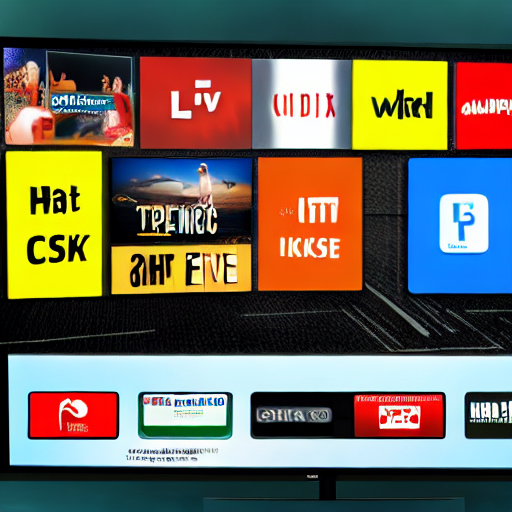Not too long ago, the concept of TV advertising tailored to specific audience segments seemed far-fetched. Traditional TV advertising involved broad, generalized ads intended for wide audiences, with little customization based on viewer preferences or behaviors. However, the rise of online streaming platforms and video distribution channels has revolutionized this approach. Unlike traditional TV advertising, these modern platforms were designed with targeted advertising capabilities from the beginning.
With TV advertising evolving, online streaming services quickly adopted sophisticated targeting methods, capitalizing on their ability to segment audiences by preference, location, behavior, and various other parameters. This shift allowed advertisers to create more personalized and relevant ad campaigns. By leveraging data to target viewers more precisely, these platforms have made TV advertising far more effective.
The effectiveness of targeted TV advertising lies in its ability to reach viewers with ads that align closely with their interests and viewing habits. This personalized approach significantly increases the likelihood that viewers will engage with the ads, remember them, and take action. The ability to tailor TV advertising campaigns to specific audience segments has transformed the advertising landscape, making it a powerful tool for brands seeking to maximize their impact.
In summary, the transition from broad TV advertising to targeted approaches exemplifies how technological advancements in online platforms have reshaped the advertising industry. While traditional TV advertising still plays a role, the precision and effectiveness of targeted TV advertising on streaming services and video channels demonstrate the future of how ads will reach audiences.
Welcome to 2024, where targeted TV advertising is no longer a distant dream but a rapidly growing reality. According to a Forbes report, addressable TV advertising has surged by an astounding 373% in the US market over the past five years. This remarkable growth highlights the shift towards more personalized and effective advertising methods.
Addressable TV advertising leverages sophisticated data-driven insights and advanced technologies, enabling TV service providers to deliver highly relevant ads to specific segments of viewers and households. This targeted approach ensures that advertisements are tailored to individual preferences and viewing habits, making them more engaging and impactful. By harnessing data, advertisers can now reach their ideal audience with greater precision than ever before.
Before delving into the specifics of addressable TV advertising, it’s essential to understand its transformative impact on the industry. For providers, this technology offers new opportunities to monetize their platforms through enhanced ad targeting capabilities. Advertisers benefit from increased efficiency and effectiveness, as their campaigns are more likely to resonate with the right audience. Meanwhile, viewers experience a more relevant and engaging ad experience, as they receive content that aligns with their interests.
In summary, the rise of addressable TV advertising marks a significant shift in the advertising landscape, driven by data and technology. As we move further into 2024, this innovative approach is set to redefine how TV ads are delivered and perceived, offering benefits for providers, advertisers, and viewers alike.
What is addressable TV advertising?
As highlighted by our experts in the first episode of our webinar series on ‘Demystifying Addressable Advertising,’ this topic is incredibly significant! TV is no longer limited to traditional broadcast methods. Today, viewers consume a diverse array of content across multiple platforms, including OTT, pay TV, and even broadcast/linear television. They use various devices such as mobile phones, tablets, and yes, even traditional TVs, and they watch this content in a range of settings—alone, with friends, or with family.
This extensive fragmentation of media consumption presents both challenges and opportunities for advertising. With the ability to target ads precisely to the right audience at the right time, advertisers can achieve higher levels of awareness and engagement. Addressable advertising allows for this fine-tuned targeting, which can lead to increased effectiveness and profitability of ad campaigns.
While navigating this fragmented landscape may seem daunting, the potential for reaching the right viewers with relevant ads makes it a highly rewarding endeavor. Effective addressable advertising can transform the way ads are delivered, enhancing both viewer experience and advertiser outcomes.

How does addressable TV advertising work?
Leveraging extensive data, addressable TV ads deliver tailored, impactful advertisements to viewers. For instance, during a live Champions League match, a group of friends might see ads for their favorite beer brand or a popular pizza chain, while a household with young children is more likely to view ads for a local amusement park or a newly released family movie. Here’s a breakdown of how these targeted ads are delivered:
The initial step in implementing addressable advertising involves gathering pertinent data about viewers. This data is sourced from various channels, including first-party information such as billing details and platform analytics, and third-party data like content metadata and data management platforms (DMPs). Integrating these data sources creates a detailed profile of viewers’ demographics, preferences, and viewing habits.
The next step is to assess your inventory and determine your rights to insert or replace ads within the video content and services you offer. Understanding the reach and mechanisms for ad placement is crucial for crafting effective advertising strategies and aligning with demand. Only with this clarity can you begin developing targeted ad offers and execute them effectively.
By combining precise data with a clear understanding of your advertising inventory, addressable TV ads can significantly enhance the relevance and impact of advertisements, leading to improved viewer engagement and advertising effectiveness.
To illustrate how addressable advertising works, here are some practical examples:
- Fast-Food Chain: A fast-food chain promoting a new signature menu available only at select branches targets households in the vicinity of those branches. The ads are directed towards residents within a specific age range who are more likely to be interested in trying the new menu item.
- Golf Resort: A golf resort aiming to attract affluent male customers across the country targets male sports enthusiasts, especially those who frequently travel by air. The resort’s ads are tailored to appeal to this demographic, focusing on their interests and travel habits.
- Retail Store: A retail store running a holiday promotion targets new customers in a specific location within a particular age range. The ads highlight special deals and promotions, aiming to attract potential new shoppers to the store.
Despite these advantages, there are challenges to consider with addressable TV advertising. For instance, there is a common perception that targeted advertising is costly. Additionally, managing attribution and measurement can be complex, especially when deploying ads across a diverse array of platforms. Addressable advertising requires careful planning and execution to overcome these hurdles and achieve effective results.
Impact of TV advertising
Television advertising enables businesses to broadcast their messages to millions of viewers simultaneously, making it a powerful tool for reaching a broad audience. It offers the ability to target specific demographics based on factors such as the channel and time of day. For instance, ads aired on weekdays during the morning are more likely to reach retirees or similar demographics, whereas ads during prime time may target younger viewers.
TV advertising is highly effective for building brand awareness and sparking interest in products or services. Its reach has expanded significantly with the advent of streaming services and online video platforms, incorporating digital advertising strategies. This evolution allows businesses to leverage TV advertising across both traditional networks and modern digital channels, maximizing their outreach and impact.
The evolution of TV advertising
Television advertising began in the early 1940s, with the first commercial airing on NBC in the US on July 1, 1941, at 2:30 p.m. The broadcast, delivered by the New York station WNBT (now WNBC), aired before a baseball game.
Since its inception, TV advertising has undergone remarkable evolution. The introduction of color TV, cable networks, and digital technologies transformed the industry. Today, TV advertising is a multi-billion dollar sector, continuously adapting to shifts in consumer behavior and technological advancements. The rise of platforms like YouTube and online streaming services has further expanded its scope, allowing advertisers to reach audiences across both traditional and digital mediums.
What are the key components of TV advertising
When assembling a TV ad campaign, consider and include the following key elements:
- Message or Story: Define the core message or narrative of the advertisement. Ensure that it clearly communicates what you want to convey to your audience.
- Visuals and Creative Elements: Design engaging visuals and creative elements that capture attention and enhance the message. This includes graphics, animations, and overall aesthetics.
- Placement and Scheduling: Strategically select where and when your ad will be shown. Consider the channels and time slots that best reach your target audience and align with your campaign goals.
- Target Audience and Demographics: Identify and define your target audience. Understand their demographics, interests, and viewing habits to tailor the ad content effectively.
- Call-to-Action (CTA): Include a clear call-to-action that directs viewers on what to do next. This could be visiting a website, calling a number, or making a purchase. Ensure the CTA is compelling and easy to follow.

Best practices for getting started with TV advertising
To create an effective TV ad campaign, follow these essential steps:
- Understand Your Target Audience: Conduct thorough market research, focus groups, and data collection to gain insights into your target market’s interests and needs. Tailor the ad to resonate with their specific preferences.
- Craft a Compelling Message: Develop a clear, memorable message that stands out. Whether it’s unique, humorous, or emotionally engaging, ensure it effectively communicates your brand’s value without being offensive.
- Utilize High-Quality Visuals: Use top-notch visuals and creative elements to capture attention. High-quality production enhances the ad’s impact and makes it more memorable.
- Strategic Placement and Scheduling: Choose the right channels and time slots for your ad to reach the intended audience. Consider when and where your target demographic is most likely to be watching.
- Incorporate a Strong Call-to-Action: Include a clear call-to-action (CTA) to guide viewers on what to do next. Encourage actions such as visiting your website, calling your business, or searching for your brand online.
Challenges with TV advertising
One challenge of television advertising is its high cost, which can be prohibitive for small businesses. Additionally, measuring the effectiveness of TV ad campaigns and determining return on investment (ROI) can be difficult due to limited metrics and tracking capabilities. With the rise of streaming services, traditional TV audiences are decreasing, potentially reducing the reach and impact of TV ads. This shift may affect the overall ROI of TV advertising campaigns as viewers migrate to digital platforms with more targeted and measurable advertising options.
Curious about addressable TV advertising and how it could benefit your business? Watch the recording of our first webinar session, where our experts dive deep into addressable advertising—its challenges, benefits, and suitability for various businesses. If you find the insights valuable, don’t miss our upcoming session, “Step-by-Step Guide to Addressable Advertising,” for a comprehensive walkthrough on getting started. Register now to ensure you stay ahead in the evolving advertising landscape!




